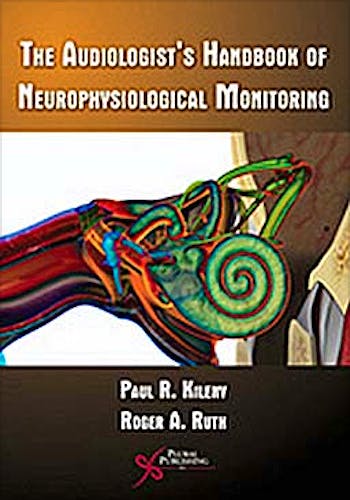

No hay productos en el carrito



The Audiologist's Handbook of Neurophysiological Monitoring
Kileny, P.
1ª Edición Junio 2018
Inglés
Tapa blanda
130 pags
400 gr
21 x 28 x null cm
ISBN 9781597563437
Editorial Plural Publishing Inc
LIBRO IMPRESO
-5%
107,45 €102,08 €IVA incluido
103,32 €98,15 €IVA no incluido
Recíbelo en un plazo de
2 - 3 semanas
Description
What is intraoperative neuropsyiological monitoring?
How did this discipline evolve?
Why is there a need for this clinical specialty?
How does one function in the operating room?
What are potential pitfalls and how does one resolve them?
How does one get trained in intraoperative monitoring?
These are just a few of the questions that arise when the term "intraoperative neuromonitoring" is mentioned. The purpose of this book is to provide satisfactory answers to these questions and more by addressing fundamental issues pertaining to intraoperativemonitoring, in particular within the framework of clinical audiology. The focus is on neural functions that are most likely encountered by audiologists in conjunction with otology/neurotology and head-and-neck surgery operations, such as auditory function and motor cranial nerve function monitoring. While the facial nerve receives the most attention, other cranial nerves are also discussed in conjunction with certain operative procedures. The book includes descriptions of surgical procedures along with the appropriateneuromonitoring protocols. The author’s hope is that the contents of this book will be instructive and that the book will engender sufficient interest and curiosity so that the reader will endeavor to seek additional information about this interesting, growing and clinically effective field. While this book is intended primarily for audiology students and practicing audiologists, its contents will be of assistance and interest to other health care providers seeking information about intraoperative monitoring.
Contents
- Principles and Purposes of Intraoperative Monitoring (IOM)
- Basic Principles of Electromyography (EMG)
- Basic Principles of Auditory EP’s
- The Audiologist in the OR
- Fitting In
- OR Etiquette
- Record Keeping
- Ethical Issues
- Medical-Legal Issues
- Auditory Function Monitoring with ABR, Electrocochleography (ECochG), and Direct Auditory Nerve Recording
- Acoustic Neuroma: Surgical Approaches
- Surgical Technique and Possible Effects on Hearing and the ABR/ECochG
- Vestibular Nerve Section
- Surgical Technique and Possible Effects on Hearing and ABR/ECochG
- Mapping the Vestibulocochlear Nerve to Determine Boundary
- Effects of Anesthetics and Sedatives
- Facial and Other Motor Cranial Nerve Monitoring
- Live EMG: Events and Their Significance
- Acoustic and Visual Monitoring
- The Evoked Compound Action Potential: Possible Changes and Significance
- Effects of Neuromuscular Blockers
- Surgical Anatomy of the Facial Nerve: How it Relates to Monitoring
- Surgical Anatomy of the Recurrent Laryngeal Nerve: How it Relates to Monitoring
- Multi-modality Monitoring
- Motor Cranial Nerve Along with Cochlear Nerve: Putting it All Together
- Acoustic Neuroma Resection with Planned Hearing and Facial Nerve Preservation
- Artifacts and Errors: How to Recognize and How to Troubleshoot
- Appendices
- ASHA & AAA Position Statements on IOM
- Protocol Flow Charts
- Record Keeping Forms
- Troubleshooting Table
About The Author
Paul R. Kileny, PhD, is Professor and Director of Audiology and Electrophysiology at the University of Michicgan in Ann Arbor.
© 2025 Axón Librería S.L.
2.149.0